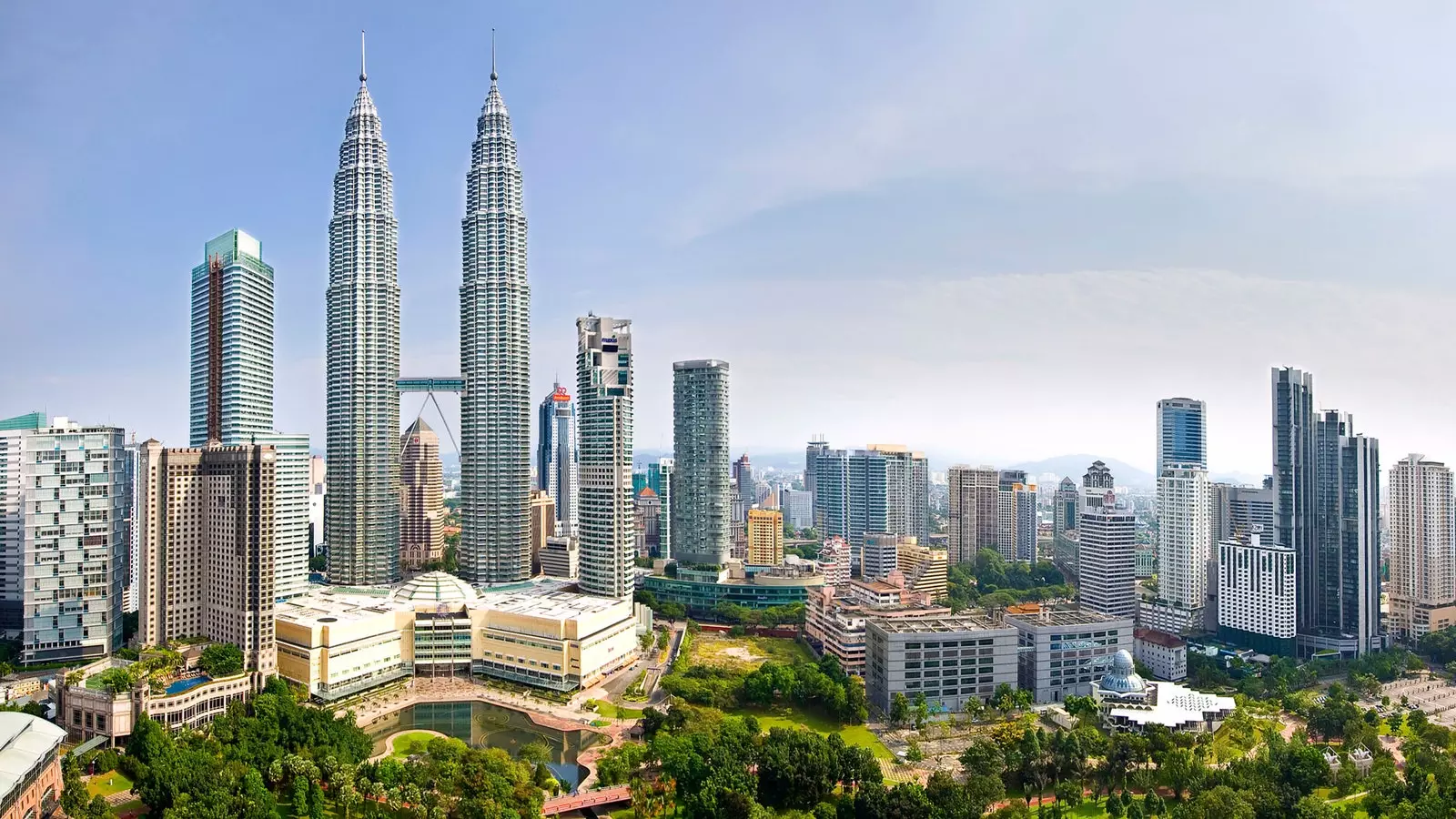
Kuala Lumpur and its Petronas Twin Towers
In KL (as the people of Kuala Lumpur condense their city into a couple of letters) they almost never refer to them as the rest of the world does: the Petronas . Here they call them the twin towers, the twin towers that for most of the planet have been, are and will always be others.
Perhaps they do it to avoid free publicity for the oil brand that built them (the Malaysian National Petroleum Corporation) and that today occupies the entire building; perhaps because for sizes of stainless steel and glass blocks, "twin" is much more affectionate and familiar . Or you can, plain and simple, because the feat of being the tallest tandem in the world , with 452 meters, gives one a license to call themselves whatever they want.
With twenty years old about to turn in 2019 (they got up in 1999), for the twins, time seems to have passed by and looking the other way. Until 2004, when in full and frantic race to play the sky opened the Taipei 101 in Taiwan They also had the title of tallest building on the planet and even today they still keep that avant-garde and cult air and they are an icon of the powerful and emerging Malaysia at the end of the century.
Although he was an Argentine, Cesar Pelli (also author of the Cartuja skyscraper in Seville, the Iberdrola Tower in Bilbao and the renovation of the MoMa, among others) who designed them, two heavyweights of Asian engineering, South Korea and Japan, put them up (one each) in a show of oriental might.
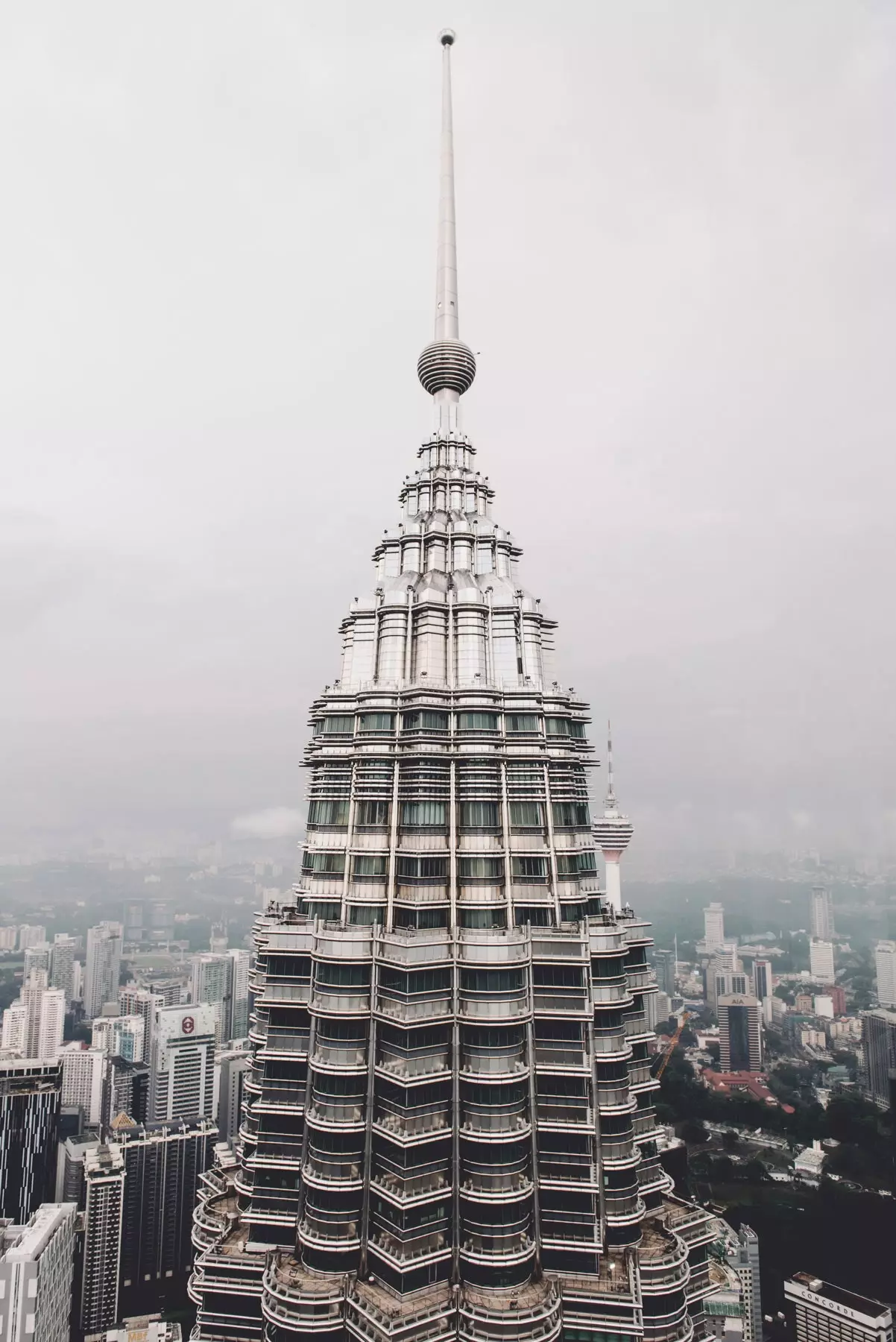
You will go to Kuala Lumpur with the excuse of meeting them, but you will get many more surprises
To differentiate them, since the swirl in the hair or the freckle on the side of the mouth does not apply here, they are limited to naming them as Tower 1 and Tower 2. From the same mother and different father, both came out nailed and seen from the sky they have exactly the same shape: the one with the eight-pointed star of Islamic culture to which Pelli wanted to wink.
Both (in addition to twins, Siamese) are joined by the sky bridge (between floors 41 and 42, 170 meters away), where there are an almost perfect vantage point ... which only lacks one element in the panorama, precisely themselves. To see them you have several options, from the heliport converted into a bar, the HeliLounge Bar, from the rooms and Mandarin Oriental hotel pool , from the restaurant Nobu ... and also from the TV tower, the KL Tower, 421 meters.
In 2013 'the little sister' arrived, petronas 3 , a third skyscraper also by César Pelli that houses offices and commercial areas. But the plans to scratch the sky of KL do not end here and presumably in 2024 they will take shape in the Torre Merdeka PNB 118 (merdeka means 'freedom'), from the hand of the Australian study Fender Katsalidis Architects.
With 630 meters and all energy efficiency certificates, it will be the highest in the country, the third in Asia and the fifth in the world, and with plenty of space for shopping malls, observatories and a six star hotel.
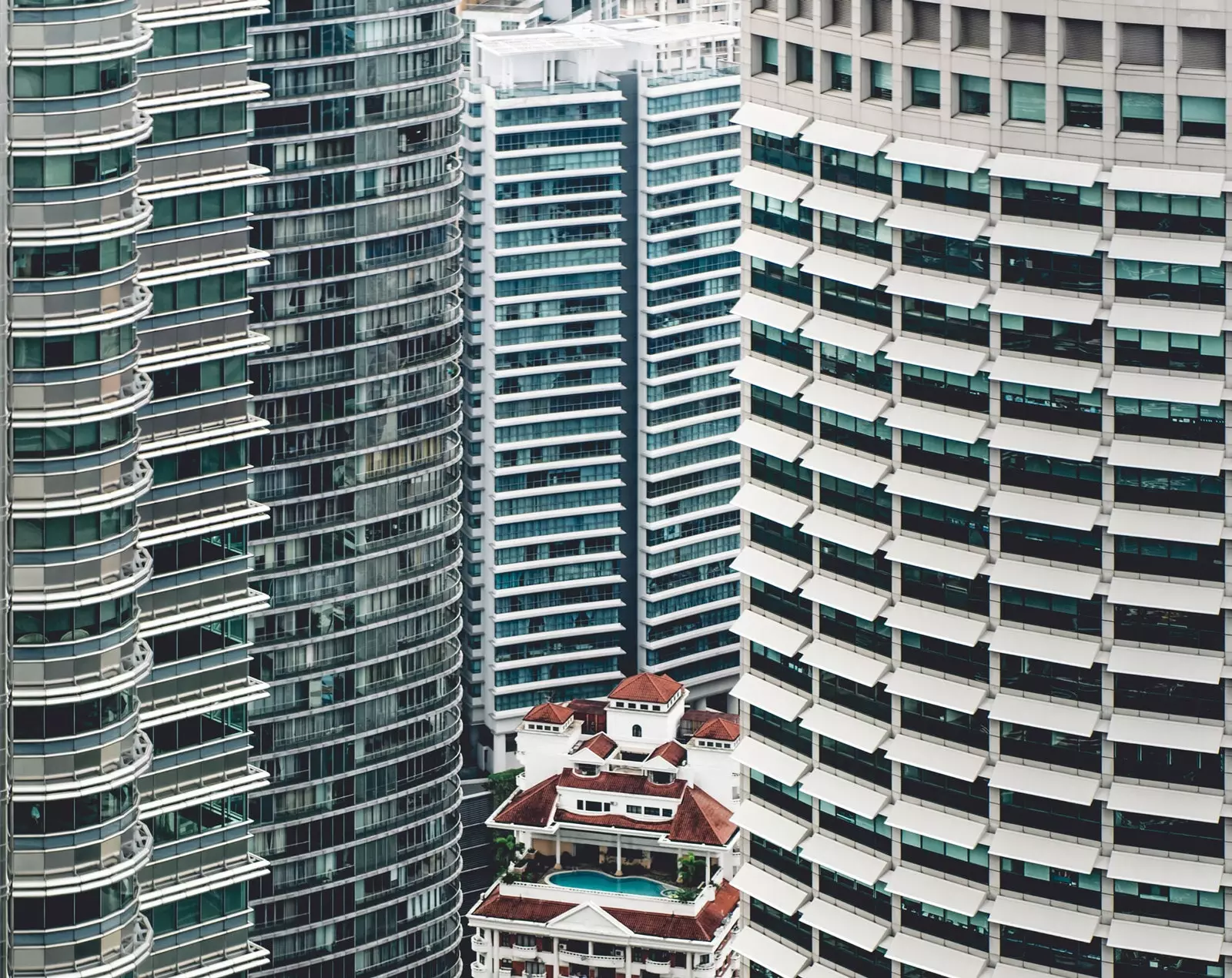
The Petronas Twin Towers from Nobu Restaurant
Until that happens, the twins will continue to be the queens of the mambo of the Malaysian skyline, and that point that no tourist wants to miss to take the obligatory photo no matter how tired it is –a piece of advice: the best ones are found from the garden behind the towers , a circumstance cunningly exploited by sellers of fisheye lenses that can be incorporated into the mobile for a few dollars. Another good one is the shocking contrast of skyscrapers and traditional wooden houses in the neighborhood of Kampung Baru –in Malay it means ‘new village’–, which during the English colony (from 1786 to 1956) were protected and assigned to the Malay community and today still belong to its members, and cannot be sold.
But, going back to the twins, Was there life before them? Yes, there was. And, until they were born, the star of all KL tourist brochures was the Sultan Abdul Samad Building clock , a much shorter tower that crowns the colonial building of Moorish influence, built entirely in brick, with pointed arches and bulbous domes, it presides over Merdeka Square. Originally intended as a secretariat for the British Government, it has now been converted into the Ministry of Information, Communication and Culture.
Surrounding the square, where independence from Malaysia was declared in 1963, and surrounding a cricket pitch used for many events (including the New Year's parade), several buildings erected by the English remain: Malaysia's first bank, St. Mary's Cathedral , where there is still a plaque commemorating the visit of Queen Elizabeth II and a pipe organ built by the same craftsman who made the one at Sant Paul's in London, and the elitist Royal Selangor Club.
Although today very run down, in his bar, the dog , was where the crème de la crème of the gentlemen of the colony conversed around a good Scotsman. He was known as such because his wives made sure that they had taken the "dog for a walk" and not to other necessities when they could see the dogs religiously tied with their leashes at the entrance of the premises.
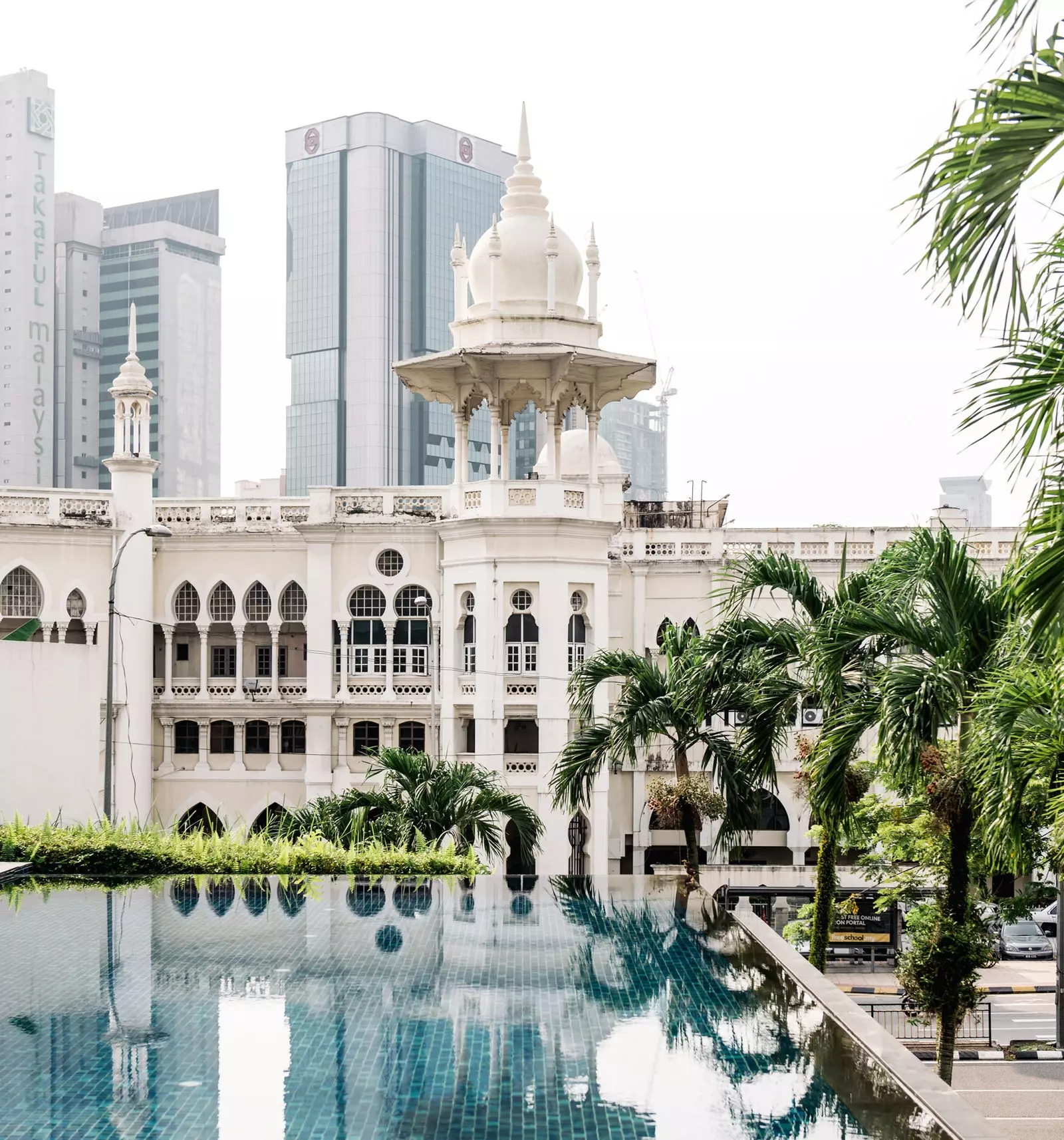
View of the old train station from the Majestic hotel
Another of the great constructions of this period, 1910, is the old train station , an evocative building decorated with horseshoe arches that, replaced by another much more modern and functional one, the KL Sentral Station, it works only as a stop for regional trains and buses.
But there was a day when all the travelers arriving or departing from KL passed through here and distributed themselves in their two hotels: those who had the coins counted booked within the same enclosure in the heritage hotel ; the potentates in the Majestic , a luxurious accommodation built in 1932 in neoclassical-deco style. Although restored in 2010, with a new, more contemporary wing, its ceiling fans continue to ventilate that romantic British Atmosphere, and his nostalgic staff uniform a la “Dr. Livingstone, I suppose”, making us travel to another time.
So does, not far away, another baby blue colonial building and art deco letters surmounted by the Malaysian flag (much like the United States but with a crescent moon and a symbol of Islam): the central market.
It is the perfect place to brush up on the local fruits (the salak or snake fruit, the rambutan, the lychee and, of course, the **durian**, that absolutely stinking kind of melon shaped like a hand grenade). which is an authentic delicatessen for Asians) and, above all, to buy at a good price the typical crafts of the country , wood, jewellery, metal... and the popular batik (in fact, this is the favorite store of the Malaysian designer Jimmy Choo).
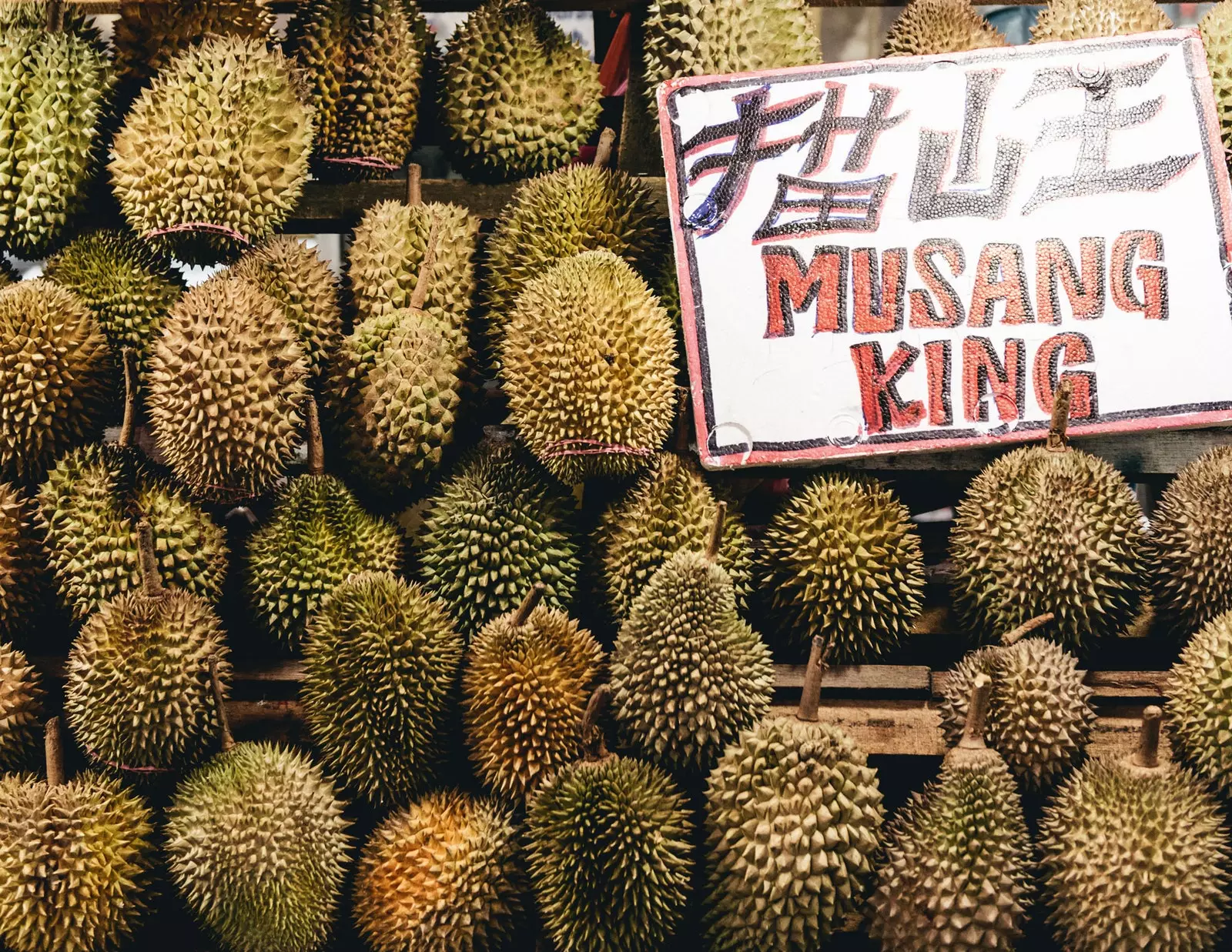
Durian stand in the Central Market
A few meters away is the place where the city was founded, at the junction of the Klang and Gombak rivers , which form a 'Y'. On one side (the east) lived the Chinese community and on the other (the west) the English settled. **The River of Life (ROL) **, a recently inaugurated million-dollar project, has cleaned up the area, which suffered from frequent flooding, also creating a leisure area and a walking area for its citizens.
More or less spruced up, the spirit of Chinatown hasn't changed so much since then: every night, the merchants go out to make their exchanges and transactions by the light of the moon and the red lanterns in the Petaling Street Night Market.
There, without giving you time to blink, everything comes together on the retina: street food, fakes of all kinds of products, stores that sell roots, spices and remedies of traditional Chinese medicine attended by little men with very long beards and reflexology or massage stalls...
Among all of them stand several temples of the predominant religions in KL, one of the features that most defines this multicultural city: Sri Mahamariamman's , the largest Hindu temple in the city; the buddhist Kuan Yin Temple , dedicated to the goddess Kuan Yin, and the Taoist Kuan Ti , the favorite place to celebrate Chinese New Year.
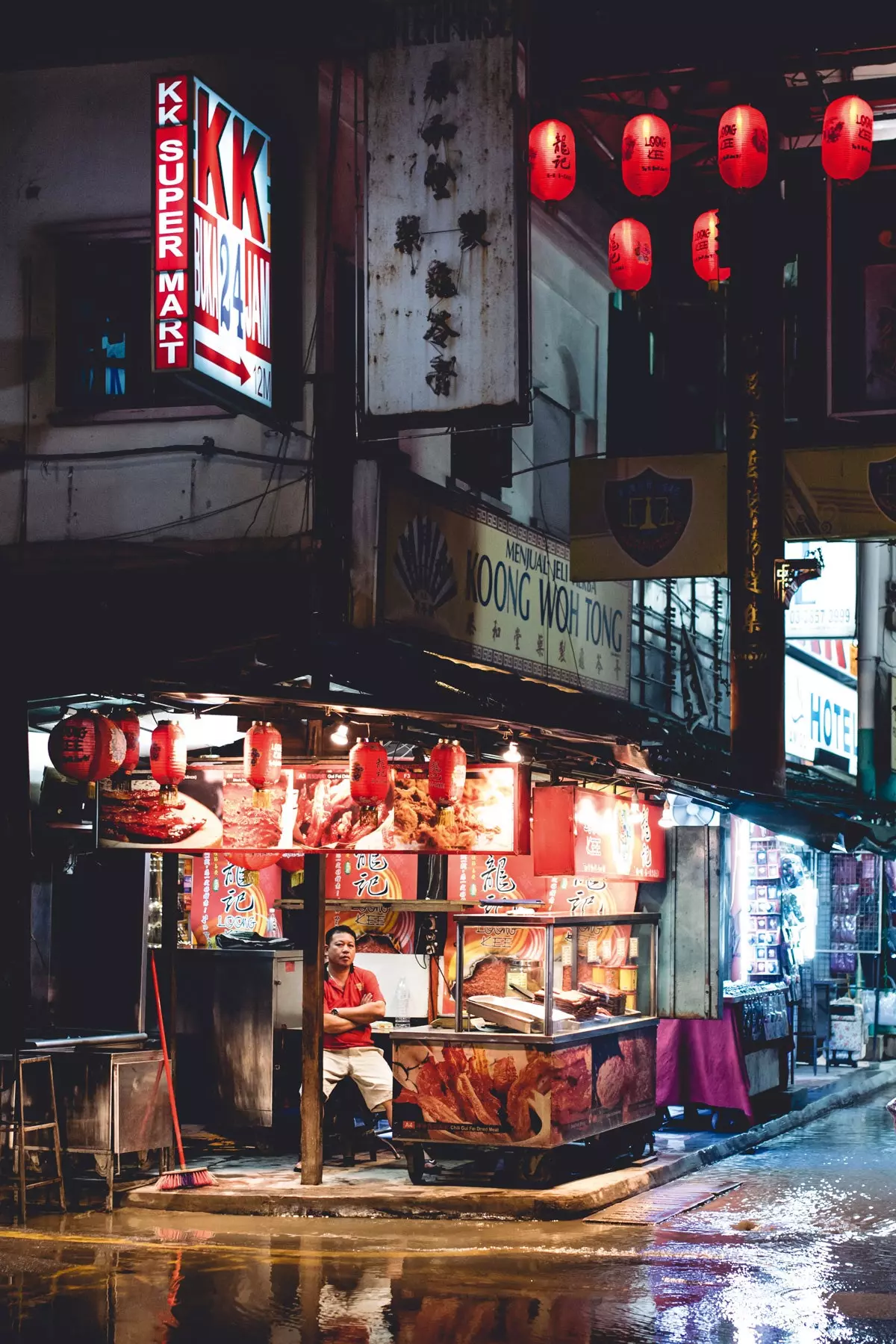
A corner of the Petaling Street Night Market in Chinatown
Apart from markets and shrines, incense sticks and skewers, Chinatown is still that chocolate box that suddenly opens and from which unexpected music comes out . fits smoke, vice and alcohol and things are not always what they seem.
Camouflaged behind shabby facades, hidden in halls accessed by back entrances or steep stairs, or disguised as toy stores, are what are, without a doubt, coolest places in town : coffees like Merchant's Lane Y Old Chinese House either semi-clandestine speakeasies and playful as Suzie Wong Y PS150 , to which the puppies of the capital's high spheres arrive, amused. Also there you can find good kopitian , the traditional neighborhood cafes serving morning coffee, breakfast and local food throughout the day.
In Ali, Muthu & Ah Hock you eat a good nasi lemak , one of the typical Malaysian dishes, based on rice with coconut milk wrapped in a pandan leaf that can have different ingredients. Another true totem of the city's local food (beyond Chinatown) is the Jalan Alor street , an absolute must where you can try street food at bargain prices: fried oysters, otak otak (fish wrapped in banana), dim sums, barbecue, noodles... which are eaten on the go standing up or on always crowded plastic tables.
to be done with best indian cuisine, with dishes such as rice in banana leaves or thosai (a kind of crepe) , it is advisable to make a short trip (about twenty minutes by car from the center) to Brickfields, the Little India of KL , which includes the area that goes from Jalan Travers to Jalan Tun Sambathan.
It is a colorful and lively place where there is space from palmists to colored candy stalls and gentlemen (always gentlemen) making flower necklaces for offerings, between huge screens with Bollywood scenes and saree shops.
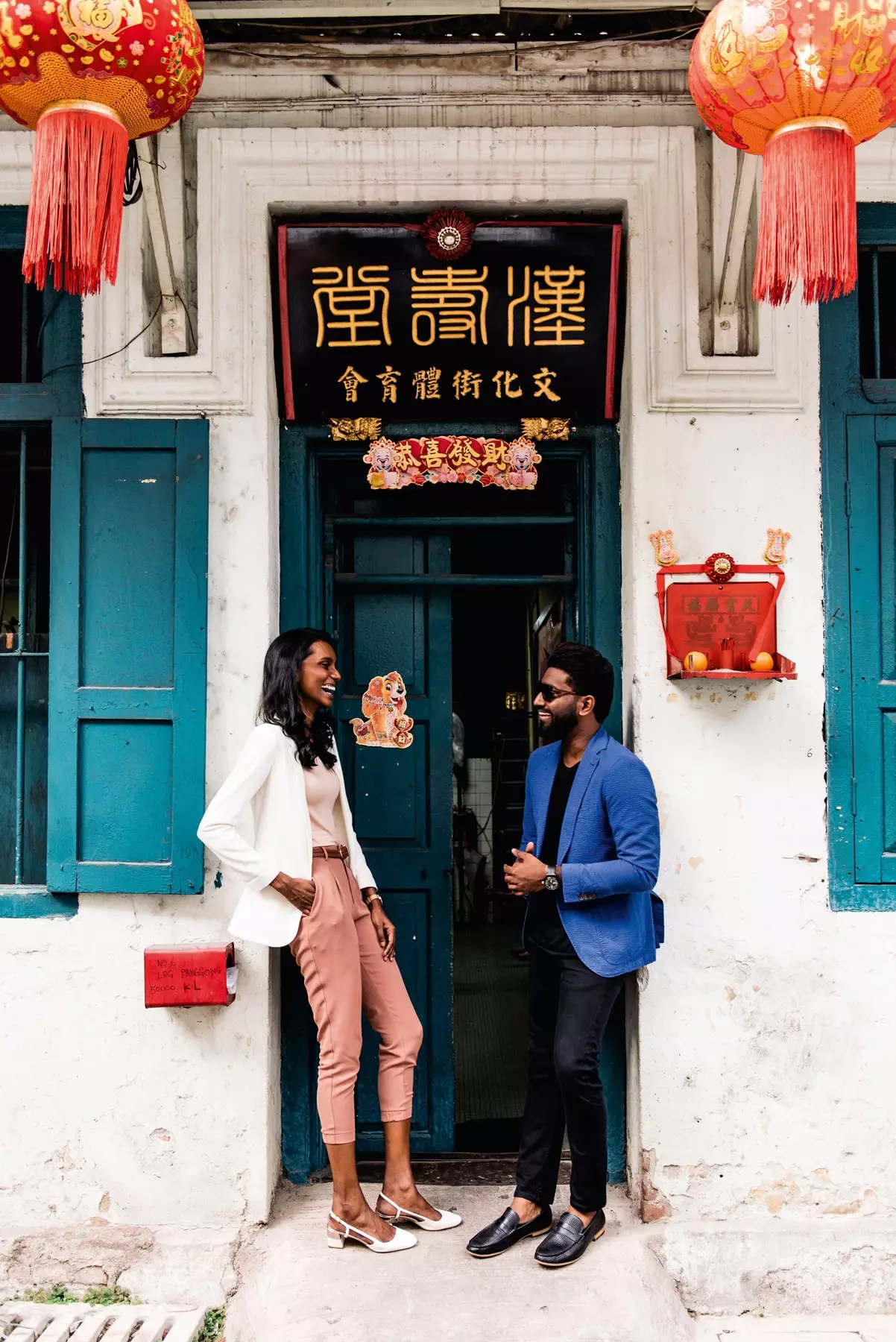
Film director Ravivarma Vicraman and Malaysian model Vanizha Vasanthanathan in Chinatown
Only a few blocks separate this fluorine universe from a completely different one: Bangsar neighborhood. Many expatriates live there and thanks to (or because of) them it has become a good place to go out for dinner or a drink – its Sunday night market is essential.
There, in what was the site of an old printing press from the 1960s, one of the most modern hubs in the city has been established, a creative space that brings together art, culture and business, with coworking premises, cafes, bistros and shops of emerging designers.
It is the typical place where you can shave sitting in a hydraulic chair at the hands of a tattooed bearded man or eat a dessert called unicorn tears accompanied by a creamy latte one of those that leave the mustache covered in snow. And speaking of snow, wonder if anyone has ever seen snow from the heights of the Petronas.
HOW TO GET
Singapore Airlines
Singapore Airlines flies to Kuala Lumpur from Spain with a stopover in Singapore and a total duration of 14 hours and 35 minutes. Every day five flights depart from Barcelona for Singapore (two direct and three with a brief technical stop in Milan) and from there the company has 71 weekly flights to the Malaysian capital. **Prices start at €590 in tourist class, €1,590 in Premium Economy and €2,740 in Business (round trip)**.
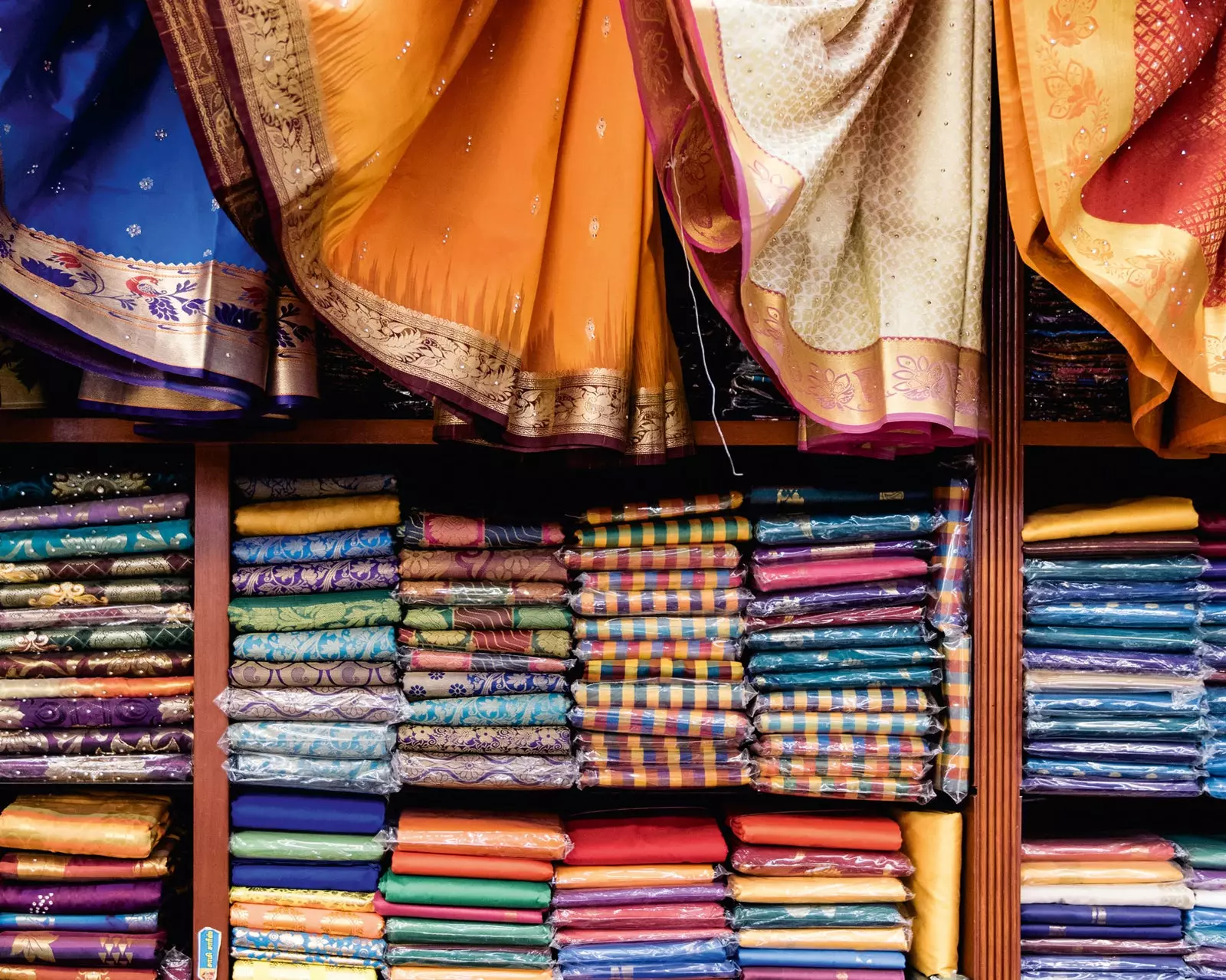
Sarees shop in Brickfields, Little India
WHERE TO SLEEP
** Mandarin Oriental _(From €113) _**
If you are looking to be close to the Petronas, this is the place. Its restaurants (the Cantonese Lai Po Heen; Mosaic , international cuisine; Y aqua , in the pool and with views of the KLCC towers and gardens...) and its spa are more than a plus.
** Four Seasons _(From €205) _**
In the middle of the golden triangle and also attached to the twin towers, the Four Seasons landed in the city just a few months ago with all the luxury of the brand and 209 rooms and apartments.
St Regis **(From €140) **
Fully glazed rooms with views of the city or the garden. This very focused on contemporary art , with a first-rate collection. your restaurant, Taka by Sushi Sait or, it has three Michelin stars.
WHERE TO EAT
** Nobu ** _(Tasting menus, €85-100) _
The legendary Japanese chain is also represented in KL, specifically together with Petronas. You'll find all its classics designed to share and try . Open kitchen, sushi bar, chef table, views and even a room for smokers.
nadodim _(Tasting menu, €85-100) _
Fine dining restaurant on the first floor of The Mayang Club. Nomadic cuisine, with various Asian influences. Traditional recipes, local ingredients, modern techniques and presentations to impress. They have a vegetarian menu.
** Qureshi Malaysia _(From €50) _**
An elegant Indian specializing in kebabs, curries, biryanis and other traditional recipes in a contemporary version.
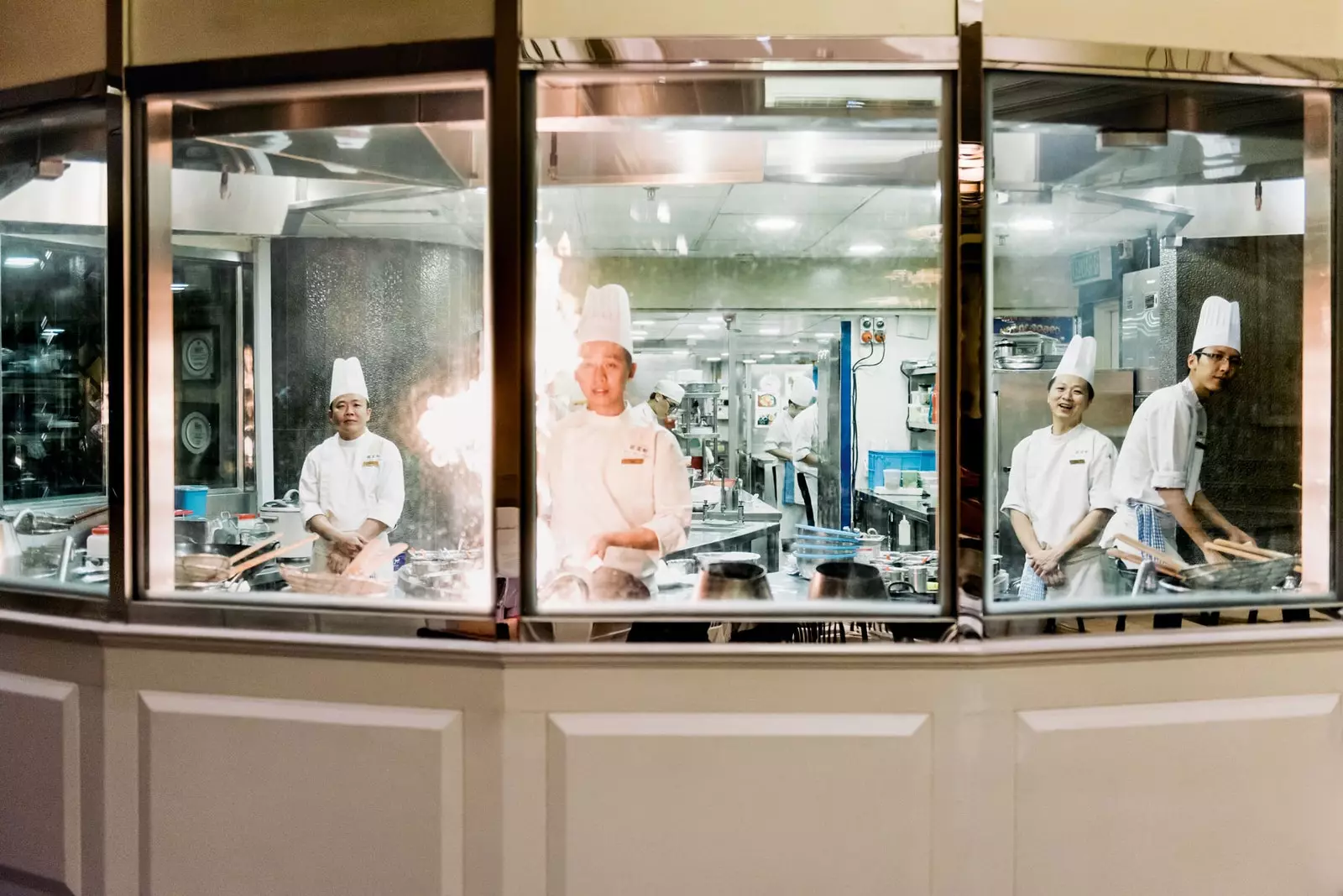
The kitchen of the Lai Po Heen of the Mandarin Oriental hotel
WHERE TO HAVE A COFFEE
** Merchant's Lane _(150, Jalan Petaling) _**
In Chinatown, an orchard full of plants, rattan furniture and chipped walls where you can go for tea or coffee and have breakfast. cool clientele. Very fashion.
** Breakfast Thieves _(From €50) _**
In the zone of Bangsaar, Inside the old printing press, this Australian-origin coffee makes a splash. Among their fun desserts are the Unicorn Tiramisu or the Magic Dice . All very much in line with this philosophy, your Wi-Fi password, for example, is stolemywifi. Wonderful breakfasts for champions.
Old China Cafe
In Chinatown, in an old shophouse that preserves almost everything original, both on the outside (including the mirrors at the entrance, typical of feng shui) and in the furniture. It serves Malay-Cantonese cuisine.
WHERE TO DRINK
PS150
Nobody would guess that behind the door of a retro toy store on Petaling Street (and below the successful Merchant's Lane) is one of the best cocktail bars in the city. is inside a old brothel set with bamboo curtains, red lamps, lanterns and several rooms with different environments. Phenomenal cocktail menu divided into five sections: Vintage, Prohibition, Tiki, Disco and Contemporary.
Trec
It is the nightlife area par excellence of the city, the place where have a drink after work or give it your all on the weekends (and without disturbing the neighborhood): bars, burger joints, the classic 7Eleven that pulls you out of a pinch at the last minute and some international restaurants, from pizza to Korean barbecue. Take a look at your schedule: they program different events and live music.
** Suzie Wong **
The protagonist of Richard Mason's 1957 novel –made into a film by Richard Quine– gives this Chinatown speakeasy its name, decorated with great detail and an oriental atmosphere of velvet and tinsel. No sign - you'll find it by the noodle cart at the door that gives it away.
Heli Lounge Bar
Impressive panoramic bar on a heliport with 360-degree views of the city's skyline. Avoid the lower floors and go directly to the roof terrace.
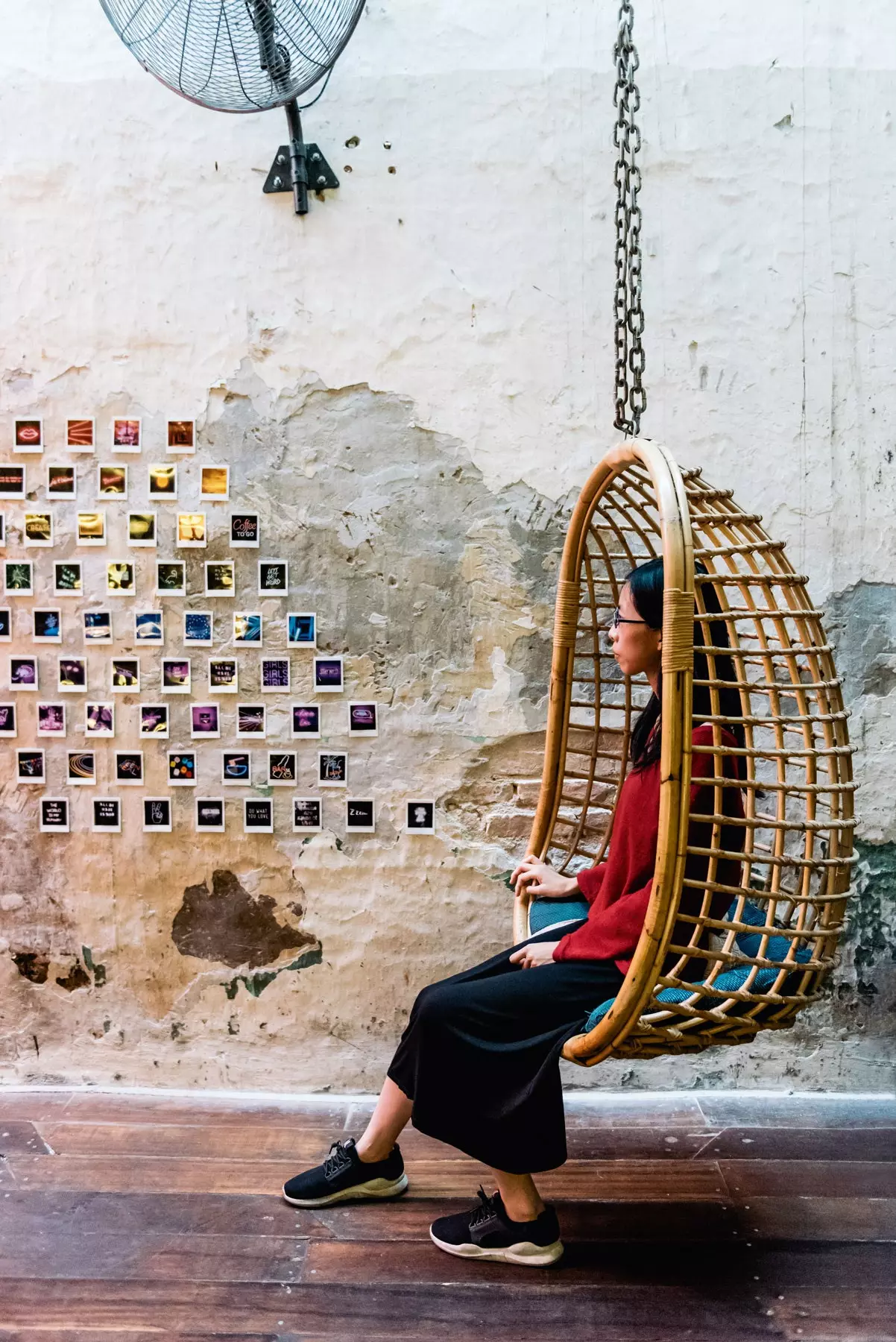
Merchant's Lane off Petaling Street
WHERE TO BUY
The Pavilion
Kuala Lumpur is one of the most famous cities in the world for its shopping. And this shopping center, in its trendiest district, bukit bintang , one of the protagonists of it. Among the more than half a thousand firms present you will find Max Mara, Rimowa, Rolex or Celine.
Kuala Lumpur Craft Complex
All kinds of typical handicrafts are sold in this building. Perfect for buying quality souvenirs: jewelry, clay pottery, textiles... There are also workshops where you can see how wood or batik is worked.
WHAT TO VISIT
Lake Gardens
In the center, the largest lung in the city It has two artificial lakes and space for several parks inside: the orchid garden (Orchid Garden), the bird garden (Kuala Lumpur Bird Park), the butterfly and deer garden (Butterfly Park Kuala Lumpur and Deer Park Kuala Lumpur).
Batu Caves
On a hill about 13 km north of the city, is what is considered the most important Hindu shrine outside of India , dedicated to the god Murugán, whose huge statue is represented. Easy to reach by public transport, it is a must-see. Of course, you have to be prepared to climb the very steep staircase of 272 steps and to deal with the hordes of food-stealing macaques.
Islamic Arts Museum
Opened in 1998 in a beautiful contemporary building, It is the largest museum of Islamic art in Southeast Asia. with pieces of jewellery, textiles, weapons, wood carvings, coins, books... Its originality lies, above all, in the fact that it gives special importance to Islamic culture in Asia, China and India.
***** _This report was published in **number 124 of Condé Nast Traveler Magazine (January)**. Subscribe to the printed edition (11 printed issues and a digital version for €24.75, by calling 902 53 55 57 or from our website). The Condé Nast Traveler January issue is available in its digital version to enjoy on your preferred device. _
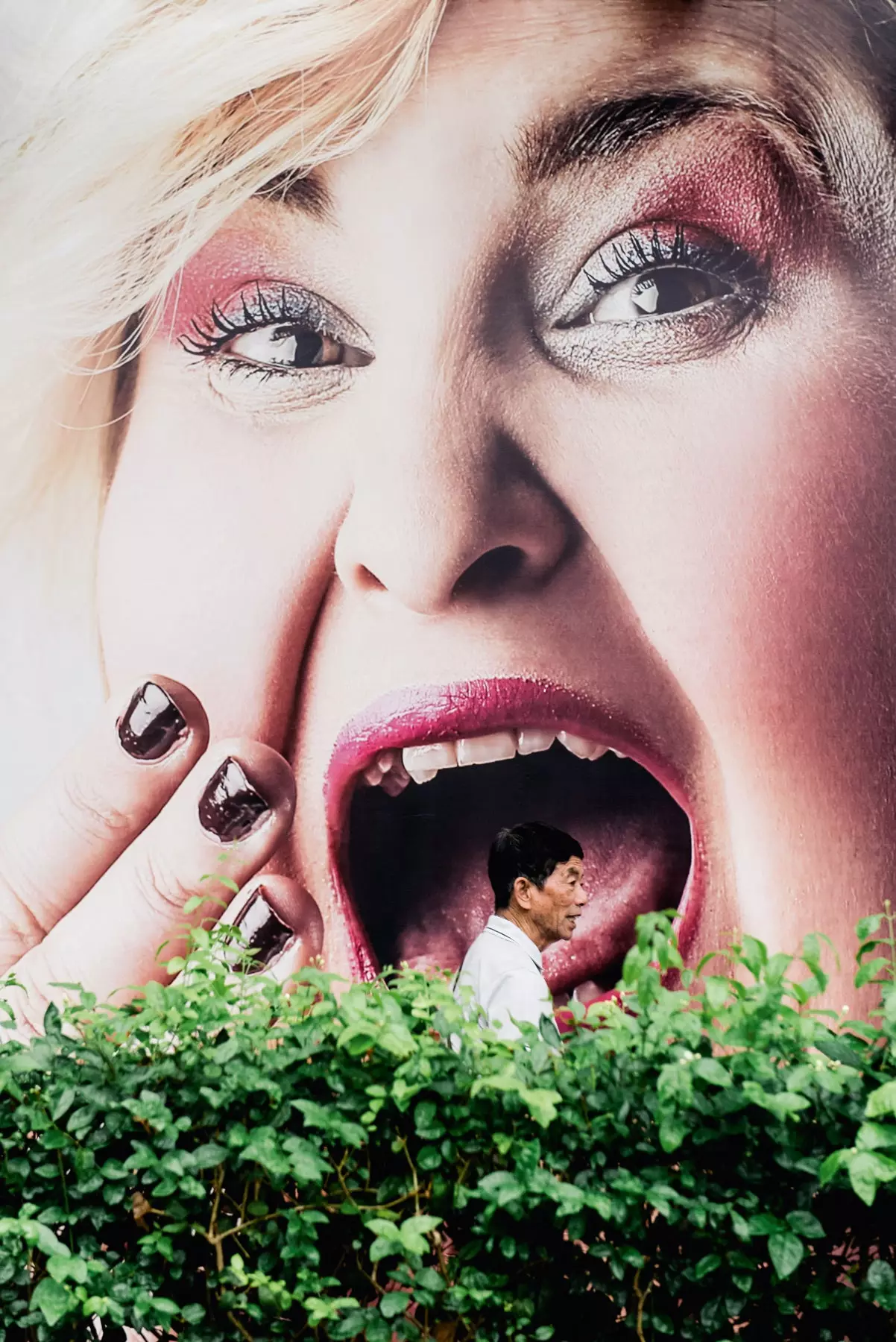
KLCC Park Mural
